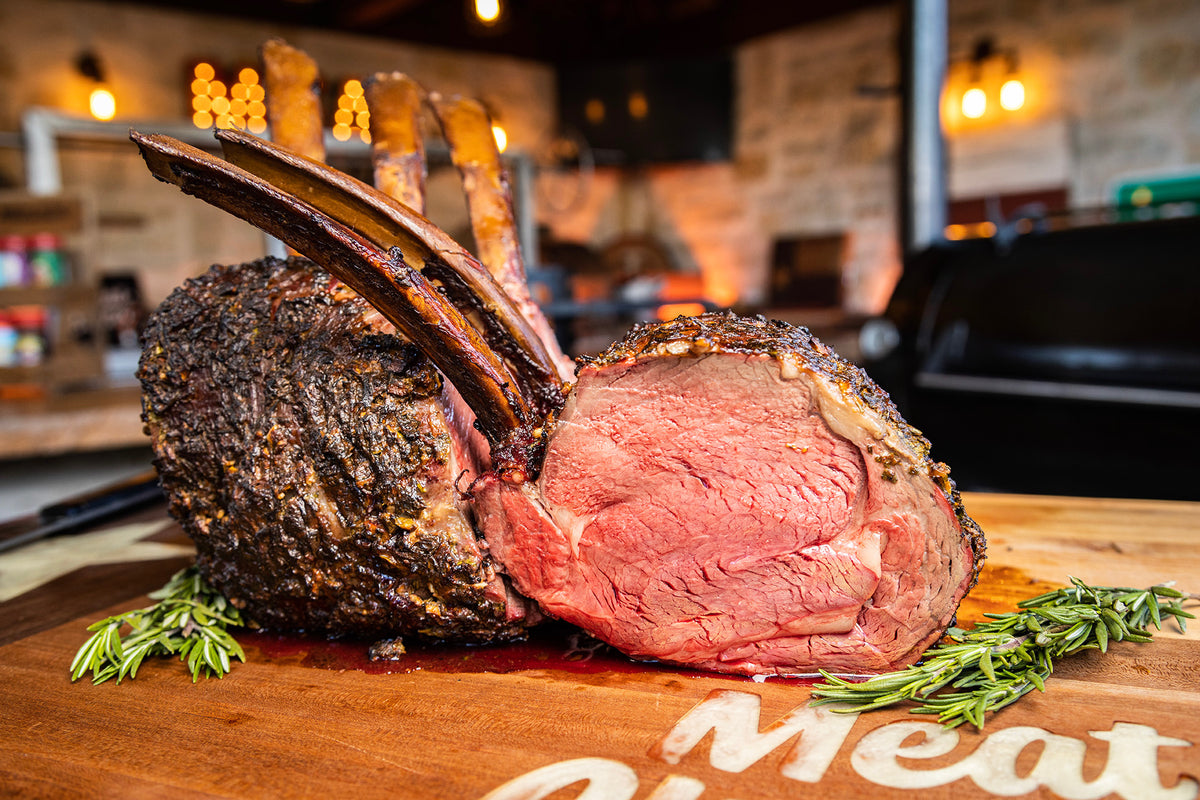The Ultimate Guide to Mastering the Perfect Standing Rib Roast
Preparing a standing rib roast can be a daunting task, but with the right guidance, you can serve a dish that not only impresses your guests but also tantalizes their taste buds. This guide will provide you with everything you need to know about selecting, preparing, and cooking a standing rib roast to perfection.
Key Takeaways
- Selection: Choose a high-quality cut for the best flavor and tenderness.
- Preparation: Season generously and let the meat rest to enhance its natural flavors.
- Cooking: Use a meat thermometer to ensure the perfect doneness.
- Serving: Let the roast rest before carving to retain juices.

Understanding Standing Rib Roast
The standing rib roast, often referred to as prime rib, is a classic dish renowned for its rich flavor and tender texture. This cut of beef comes from the primal rib section, which is located on the upper back of the cow. It is known for its marbling, which contributes to its juicy and flavorful nature.
Selecting the Perfect Rib Roast

When selecting a standing rib roast, quality is key. Look for the following characteristics:
- Marbling: Choose a roast with ample marbling. The intramuscular fat ensures a juicy and flavorful roast.
- Bone-in vs. Boneless: A bone-in roast provides more flavor, while a boneless roast is easier to carve.
- Grade: Opt for USDA Prime or Choice for the best quality.
- Size: Estimate one rib for every two people, which typically weighs around two pounds per rib.
Preparing Your Standing Rib Roast
Preparation is crucial for a successful standing rib roast. Follow these steps to ensure your roast is ready for cooking:
- Thawing: If frozen, allow the roast to thaw in the refrigerator for at least 48 hours before cooking.
- Seasoning: Generously season the roast with salt, pepper, and your choice of herbs and spices. Consider a rub of garlic, rosemary, and thyme for added flavor.
- Resting: Allow the seasoned roast to rest at room temperature for about an hour before cooking. This ensures even cooking.
Cooking the Perfect Standing Rib Roast
Cooking a standing rib roast to perfection requires attention to detail and patience. Here’s a step-by-step guide:
Choosing the Right Cooking Method
There are several methods to cook a standing rib roast, but the most popular are roasting and reverse searing.

- Traditional Roasting: Preheat your oven to 450°F (232°C). Place the roast bone-side down in a roasting pan. Start by roasting at high heat for 15 minutes, then reduce the oven temperature to 325°F (163°C) and continue cooking until the desired doneness is reached.
- Reverse Searing: Cook the roast at a low temperature of 225°F (107°C) until it reaches an internal temperature of about 10°F below your target. Then, increase the oven temperature to 500°F (260°C) and sear the roast until it reaches the final desired temperature.
Using a Meat Thermometer
A meat thermometer is essential for achieving the perfect doneness. Here are the internal temperatures to aim for:
- Rare: 120°F (49°C)
- Medium Rare: 130°F (54°C)
- Medium: 140°F (60°C)
- Well Done: 160°F (71°C)
Resting and Carving
Once your roast reaches the desired temperature, remove it from the oven and let it rest for at least 20 minutes. This allows the juices to redistribute throughout the meat, ensuring each slice is juicy and flavorful.
When carving, use a sharp knife and cut against the grain for the most tender slices. If you opted for a bone-in roast, you might need to remove the bones first for easier carving.
Serving Suggestions
A standing rib roast pairs beautifully with a variety of side dishes. Consider these classic accompaniments:

- Yorkshire Pudding: A traditional pairing that complements the savory flavor of the roast.
- Roasted Vegetables: Carrots, potatoes, and Brussels sprouts roasted in the drippings add depth to your meal.
- Horseradish Sauce: A spicy and creamy sauce that enhances the roast’s flavor.
Mastering the art of cooking a standing rib roast is a rewarding endeavor that promises to delight your guests and elevate your culinary skills. By selecting a high-quality cut, seasoning it well, and cooking it with precision, you can create a dish that is both impressive and delectable. Remember to let the roast rest before carving to ensure every bite is as juicy and flavorful as possible. Whether for a special occasion or a family gathering, a standing rib roast is sure to be the centerpiece of a memorable meal.